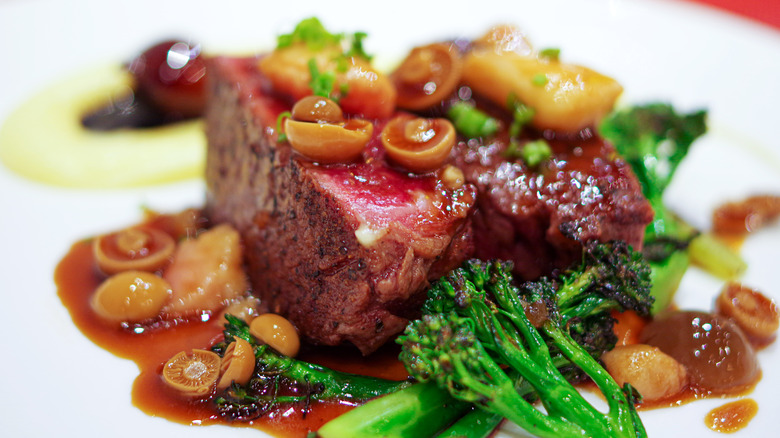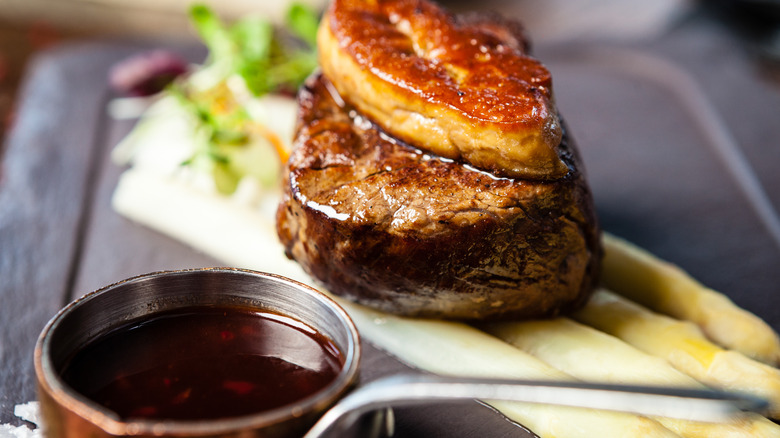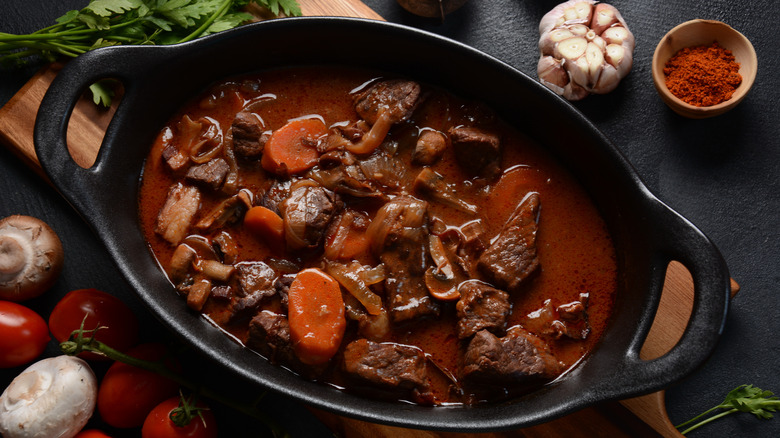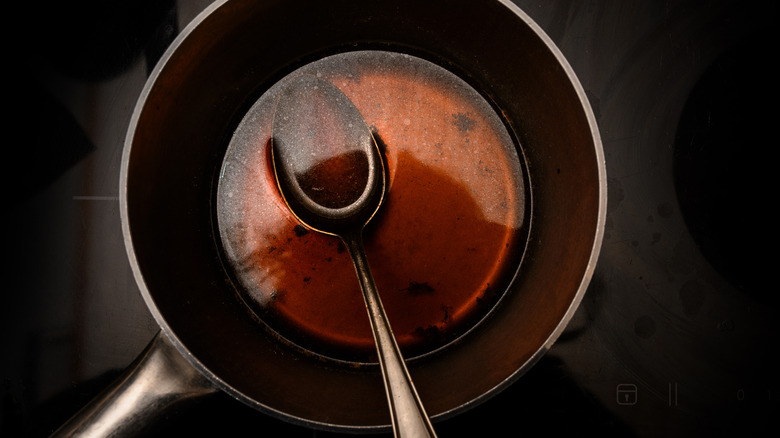Marchand De Vin: The Classic French Wine Sauce You Should Know
While there are a great many techniques that make French cuisine what it is, one of the most important components is sauces. There are the five core mother sauces, as well as small sauces, which can be made from those. And once you've mastered how to adapt these sauces to different recipes, it's at that point that you will then be ready for more delicate and nuanced reductions, like the marchand de vin sauce.
Marchand de vin is a classic French sauce that has been a staple in the culinary world for centuries. This rich and flavorful sauce is made from a combination of wine, shallots, and spices, and it is often used to enhance the taste and texture of a range of dishes. Whether you're a seasoned chef or a home cook looking to add some extra flair to your meals, understanding the history, ingredients, and techniques behind this delicious sauce is essential.
How marchand de vin was created
The history of marchand de vin, which translates to "wine merchant," can be traced back to the 17th century. The sauce was first used as a way to add depth and richness to meat dishes and traditionally made with the abundantly available red wine, which was reduced with shallots, demi-glace, and a complex melange of spices. Peppercorns, salt, parsley, thyme, and bay leaves are commonly seen in the sauce, and when combined, achieve a perfect balance of flavors — savory and mildly piquant. And the sauce is almost always finished with butter to give it a warmer, richer quality.
But over the centuries, the recipe for marchand de vin has evolved. With time, chefs added new ingredients and techniques to create their own unique interpretations of the classic sauce. Today, marchand de vin is widely used to complement a wide range of dishes, from steak to roasted chicken.
What you need to make marchand de vin
In addition to the basic ingredients, the wine used for the sauce should be a good-quality red wine, as the flavor will depend largely on its quality and depth of flavor. Many chefs advise using a red wine that you would drink rather than opting for the cheaper bottle for this reason.
The technique for making marchand de vin sauce is simple, but it requires patience and attention to detail. First, the shallots should be chopped finely, and the butter should be melted in a saucepan over low heat. The thyme, bay leaves, and spices are then added to the saucepan, and the mixture is cooked until the shallots are soft and fragrant (around 10 minutes). Next, the red wine and demi-glace are poured in and simmered until it has reduced by about half. The sauce should then be strained through a fine sieve to remove any solids, and the final sauce should be smooth and thick. The entire process can take anywhere from 20-30 minutes, depending on the heat level and the size of the pan.
Use marchand de vin for these dishes
As a daughter sauce of espagnole, marchand de vin is incredibly versatile, and can be used in a variety of dishes to enhance the flavor and texture. One of the most popular uses for this sauce is as a companion to steak, where it provides a rich and flavorful contrast to the juicy and tender meat. It can also be used to complement roasted chicken or game meats, adding depth to the dish. Marchand de vin sauce can also be used as a base for other sauces, such as béarnaise or hollandaise, or it can be used to add flavor to stews, soups, and casseroles.
Just as the Spanish adapted the French sauce for Louis XIII to make it more flavorful, this complex and rich sauce can level-up many dishes and impress almost any dinner guest. So, whether you're a green or seasoned cook, you should now be better equipped to make the most of this wonderful French sauce.



